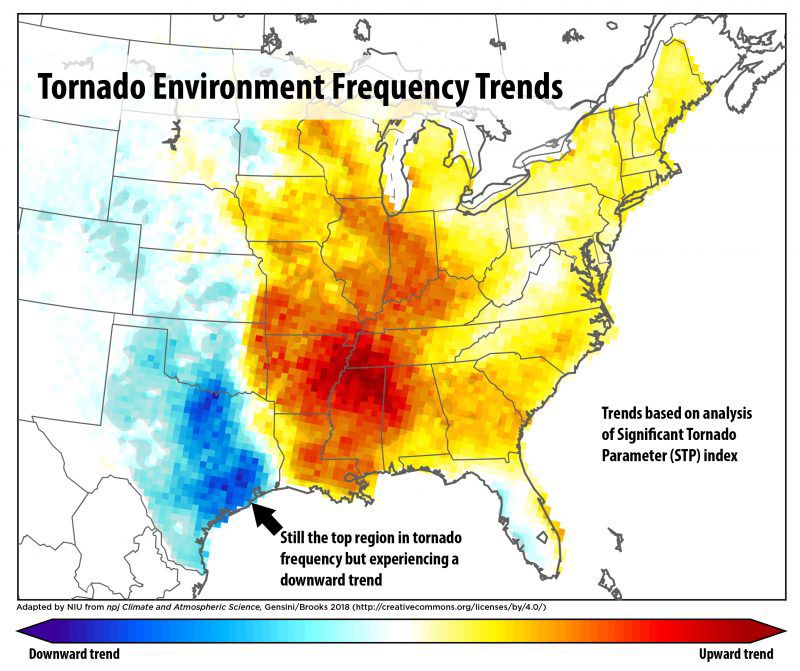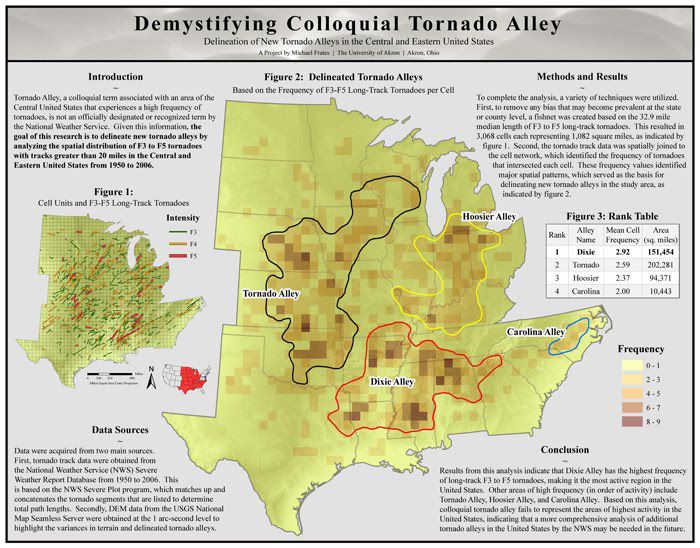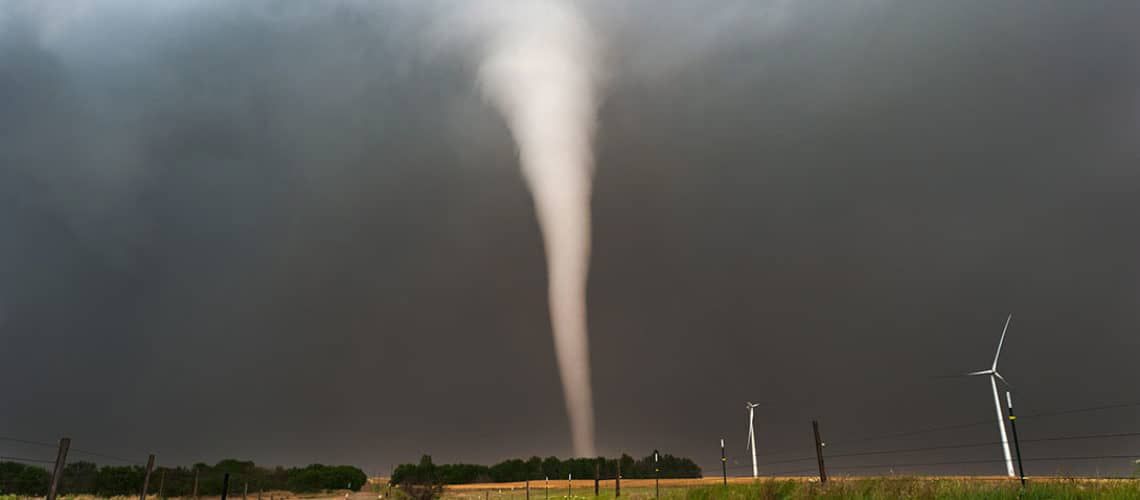
A new study suggests that over the past four decades, what is known as “Tornado Alley” has been shifting east. New research has shown that tornado frequency has increased over a large swath of the U.S. Midwest, Southeast and parts of the Ohio Valley. The researchers also found that meanwhile, tornado activity has decreased in portions of the central and southern Great Plains – parts of Texas, Oklahoma and northeast Colorado – a region traditionally associated with Tornado Alley.
Although Tornado Alley remains the top zone for tornadoes in the United States, other areas, including the so-called Dixie Alley that includes much of the lower Mississippi Valley region, are catching up.
The researchers identified a significant increase in tornado frequency over portions of Mississippi, Alabama, Arkansas, Missouri, Illinois, Indiana, Tennessee, Kentucky and western Ohio.
Victor Gensini, a meteorology professor at Northern Illinois University and lead author of the study published in the peer-reviewed journal Climate and Atmospheric Science, said in a statement:
Regions in the Southeast and Midwest are closing the gap when it comes to the number of tornado reports. It’s not that Texas and Oklahoma do not get tornadoes. They’re still the number one location in terms of tornado frequency, but the trend in many locations is down over the past 40 years.
The researchers tracked the number of tornado reports from 1979 to 2017. The study examined tornado frequency trends in fine-scale resolution using two separate approaches.
Previous research has identified the southeastern United States as quite vulnerable to tornadoes. Factors such as longer and larger tornado paths, expanding population density, mobile-home density and higher nighttime tornado probabilities were reasons of significant concern. Most of the U.S. tornado fatalities occur in the Southeast, particularly the mid-South region.
The researchers could not say for sure whether the eastward uptick in tornado frequency might be caused by natural or human-induced climate change. However, the scientists of this study said that the evidence clearly shows there is a climate change signal - but what is causing the change is still an open question.

